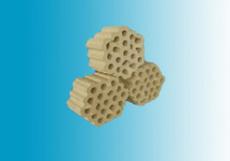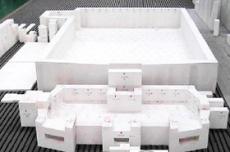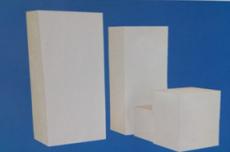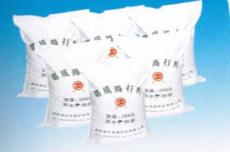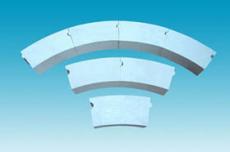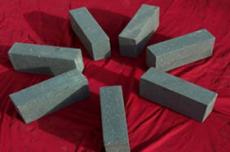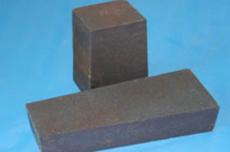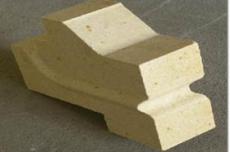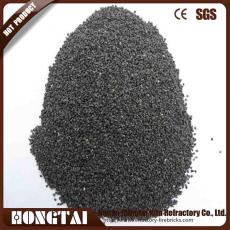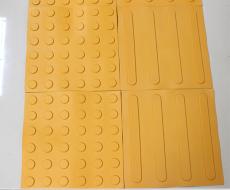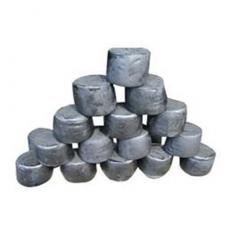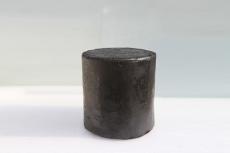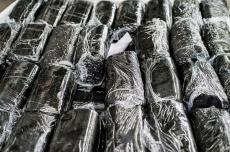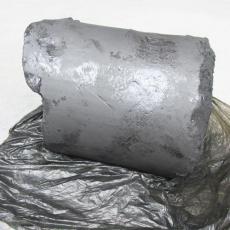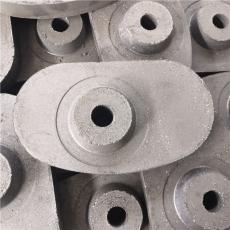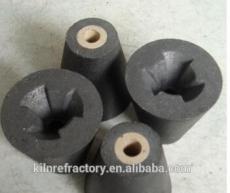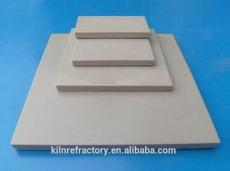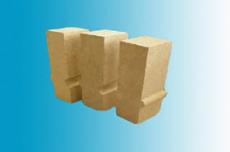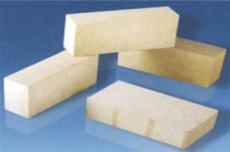
The construction project of anode carbon roasting furnace includes seven parts, including furnace bottom plate, furnace side wall, furnace cross wall, fire channel wall, furnace top and connecting fire channel, and annular flue. The design basis of the anode roasting furnace body structure is the specifications and dimensions of carbon block products, stacking method, thickness of filling coke protective layer, etc.
01 Preparation of construction conditions
(1) The construction workshop of the roasting furnace should be able to prevent moisture, rain and snow, and the temperature should be suitable.
(2) The refractory concrete of the furnace foundation and the steel structure such as the furnace shell have been completed, and have been inspected and confirmed to be qualified.
(3) The transportation and high-altitude lifting equipment have been inspected and tested.
(4) The center and elevation of the furnace body are determined and checked to be qualified.
(5) The trough plate of the roasting furnace bottom is installed and checked to be qualified.
(6) Before the various refractory materials for the carbon roasting furnace are brought into the site, their quantity and quality have been strictly checked to meet the design and construction requirements, and they are stored in an orderly and proper manner.
02 Construction Arrangement Preparation
(1) There are many types of refractory materials for carbon roasting furnaces, and the stacking space is limited. A temporary refractory material stacking point should be set up. The specific establishment method needs to be determined according to the actual situation on site.
(2) A mobilization meeting has been organized, and comprehensive technical briefing work such as the construction design plan and masonry requirements of each part of the roasting furnace, personnel planning and arrangement work, etc. have been completed.
(3) Construction work arrangement: The left and right furnace chambers of the carbon roasting furnace should be masonry at the same time; work in shifts, generally the night shift refractory materials enter the site, and the day shift carries out masonry.
03 Carbon roasting furnace construction plan
(1) Refractory material classification, selection and pre-masonry: The refractory materials entering the carbon roasting furnace should be transferred to the masonry stacking point in an orderly manner according to classification and number. According to the design and construction requirements, strict screening should be carried out, and unqualified defective refractory bricks with missing corners, cracks, etc. should not be used. Dry-lay the cross wall bricks and fire channel wall bricks of the roasting furnace and check the construction quality of the joints to prepare for the formal masonry.
(2) Laying out before masonry:
1) Use a theodolite to mark the vertical and horizontal center lines of the furnace chamber on the surrounding walls. Use a level to mark the layer height line and the horizontal elevation of the masonry on the walls of the furnace chamber, and gradually extend upward as the masonry height increases.
2) During the masonry process, check and adjust the horizontal elevation of the masonry at any time; after the furnace bottom castable construction is completed and leveled, check the control elevation in full; after the furnace bottom refractory masonry is completed, check the control elevation again.
3) The horizontal elevation of the remaining furnace wall bricks (side wall bricks, cross wall bricks and fire channel wall bricks) needs to be checked every 10 layers. Set a skin number rod to check the masonry elevation at any time during the masonry process, and strictly control the elevation to meet the design and construction requirements.
(3) Plane laying out: Plane laying out is only done three times during the entire roasting furnace masonry process:
1) After the civil engineering handover work surface is leveled with castables, mark the side wall masonry line and the sixth layer masonry size of the furnace bottom on the castable layer.
2) After the sixth layer of lightweight insulation bricks at the furnace bottom is completed, mark the side wall masonry line on it.
3) Mark the masonry edge lines of the furnace chamber horizontal wall bricks and the fire channel wall bricks on the surface of the sixth layer of masonry at the furnace bottom.
04 Masonry process of fire channel wall bricks
1. Construction preparation:
(1) Before the refractory materials enter the site, their quantity and quality should be strictly checked to ensure that they meet the design requirements. After entering the site, they should be hoisted to the construction area in batches by crane.
(2) Pull out the longitudinal and transverse center lines and horizontal elevation lines of the furnace body and mark them. Check again before construction to confirm that they are qualified.
(3) Level the furnace bottom with cement mortar with a ratio of 425 cement 1:2.5 (weight ratio). After the cement mortar solidifies, pull out the masonry line of the refractory bricks according to the center line of the furnace chamber and the center line of the horizontal wall, and check that its size meets the design requirements before starting masonry.
2. Construction of furnace bottom masonry:
(1) Construction of lower furnace bottom: First, use clay standard bricks to build brick piers on the furnace bottom longitudinally, and then use castable prefabricated blocks to cover the upper surface to make it an overhead furnace bottom.
(2) Construction of furnace bottom insulation layer: 1 to 5 layers of diatomaceous earth insulation refractory bricks with a masonry density of 0.7g/cm, and 6 to 8 layers of lightweight high-alumina bricks with a masonry density of 0.8g/cm.
(3) Construction of bottom plate bricks: Use special-shaped clay bricks to build two layers, each layer is 100mm thick. Before masonry, use the upper layer elevation of the furnace bottom as the reference, draw the layer height line and mark it, and then start masonry. Staggered masonry, the expansion joints should be filled with refractory slurry densely and fully.
3. Construction of surrounding wall masonry: Mark it according to the center line, and set a skin number rod at the connection with the cross wall to control and adjust the elevation of each layer to avoid excessive overall deviation. During the construction process, the quality of masonry shall be checked at any time to ensure that the flatness, verticality and reserved size of the wall surface meet the design and construction requirements. The expansion joints shall be filled with refractory slurry densely, and the construction area shall be cleaned when the wall is 70% dry.
4. Construction of transverse wall masonry: During the construction of transverse wall masonry, because the brick types used for the end transverse wall and the middle transverse wall are different, each operator shall be provided with a brick shape diagram during masonry. The first layer of bricks shall be pre-laid to leave a groove for the fire channel wall. In addition, the elevation of the 40th layer of the transverse wall shall be 1-2mm lower than the 40th layer of the fire channel wall. During the construction process, double-sided wires shall be drawn, and the verticality of the wall shall be controlled by the control line on the side wall. The expansion joints between the transverse wall and the side wall shall be filled densely.
5. Construction of fire channel and connecting fire channel:
Fire channel wall brick masonry:
(1) During the construction of fire channel wall bricks, because there are many brick types, the construction personnel are required to be familiar with the bricklaying diagram, and no more than 13 layers shall be laid per day. The vertical joints do not need to be filled with refractory slurry.
(2) Before laying, check the foundation elevation and center line of the roasting furnace and make timely adjustments. Use dry sand or refractory bricks for leveling.
(3) When laying the fire channel wall bricks, the furnace wall elevation should be strictly controlled according to the layout size, and a ruler should be used to check the flatness of the large wall at any time.
(4) The reserved position and size of the expansion joint should meet the design requirements. Before filling the refractory mud in the joint, the debris inside should be cleaned up.
(5) When laying the refractory bricks at the bottom of the fire channel capping bricks, the brick joints and vertical joints are not filled with refractory mud. When laying the side fire channel against the large wall, the vertical joints are filled with refractory mud.
(6) The prefabricated blocks should be made as required before installation, and the allowable deviation of the prefabricated block size should be within ±5mm.
Connecting fire channel wall brick laying: The connecting fire channel can be laid independently or simultaneously with the end cross wall. When laying the insulation layer, the material, quantity, number of layers and laying position of the lightweight insulation bricks should meet the design requirements.
6. Furnace roof installation: The installation of the furnace roof prefabricated block should start from one end, first install the upper connecting fire channel, then hoist the castable prefabricated block to the upper part of the fire channel wall, and finally install the castable prefabricated block on the cross wall. When installing the upper part of the fire channel, it is necessary to fill the bottom of the castable with 75mn zirconium-containing thermal insulation ceramic fiberboard.
